Control of sexual differentiation and behavior by the doublesex gene in Drosophila melanogaster
- PMID: 20305646
- PMCID: PMC3092424
- DOI: 10.1038/nn.2515
Control of sexual differentiation and behavior by the doublesex gene in Drosophila melanogaster
Abstract
Doublesex proteins, which are part of the structurally and functionally conserved Dmrt gene family, are important for sex determination throughout the animal kingdom. We inserted Gal4 into the doublesex (dsx) locus of Drosophila melanogaster, allowing us to visualize and manipulate cells expressing dsx in various tissues. In the nervous system, we detected differences between the sexes in dsx-positive neuronal numbers, axonal projections and synaptic density. We found that dsx was required for the development of male-specific neurons that coexpressed fruitless (fru), a regulator of male sexual behavior. We propose that dsx and fru act together to form the neuronal framework necessary for male sexual behavior. We found that disrupting dsx neuronal function had profound effects on male sexual behavior. Furthermore, our results suggest that dsx-positive neurons are involved in pre- to post-copulatory female reproductive behaviors.
Figures
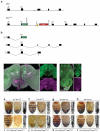
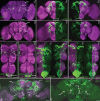
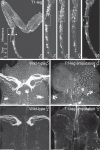

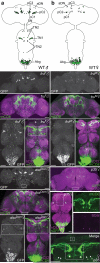
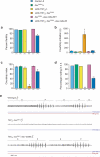

References
-
- Dickson BJ. Wired for sex: the neurobiology of Drosophila mating decisions. Science. 2008;322:904–909. - PubMed
-
- Villella A, Hall JC. Neurogenetics of courtship and mating in Drosophila. Adv Genet. 2008;62:67–184. - PubMed
-
- Zarkower D. Invertebrates may not be so different after all. Novartis Found Symp. 2002;244:115–126. discussion 126-135, 203-116, 253-117. - PubMed
-
- Ng CS, Kopp A. Sex combs are important for male mating success in Drosophila melanogaster. Behav Genet. 2008;38:195–201. - PubMed
Publication types
MeSH terms
Substances
Grants and funding
LinkOut - more resources
Full Text Sources
Molecular Biology Databases

